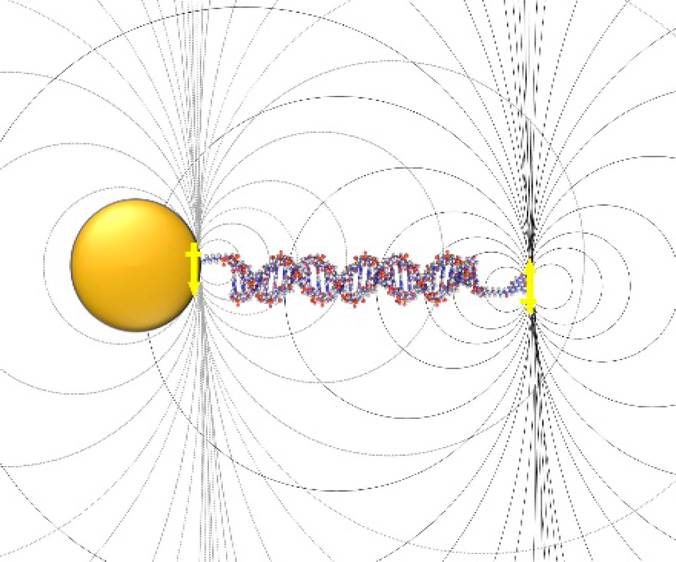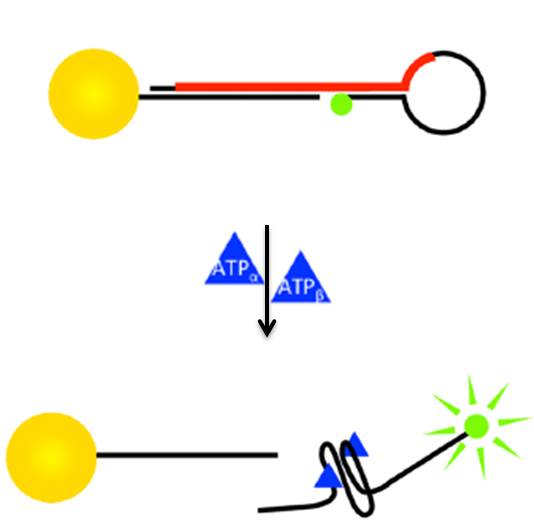Optical Rulers: Biophysics

Energy Transfer of an excited state donor to an accepter has long been used measure distances on the nanoscale. Förster Resonance Energy Transfer (FRET) has led the field in use but is typically limited to 80 Å, by utilizing a fluorescent dye donor and an accepting dipole whether that be another dye or a black hole quencher. Nanometal Surface Energy Transfer (NSET) has extended the reach of the molecular ruler to distances exceeding
400 Å, by replacing the accepting molecule with a metal nanoparticle. The extension can be attributed to an enhanced coupling of the electromagnetic field of the dipole to that of the metal nanoparticle. NSET accurately predicts the extent of this coupling by incorporating the size dependent optical and electronic properties of the accepting nanoparticles. Our group has shown the usefulness of NSET as a molecular ruler by observing conformational changes in Hammerhead RNA and is currently investigating uses in small molecule detection utilizing aptamers.
